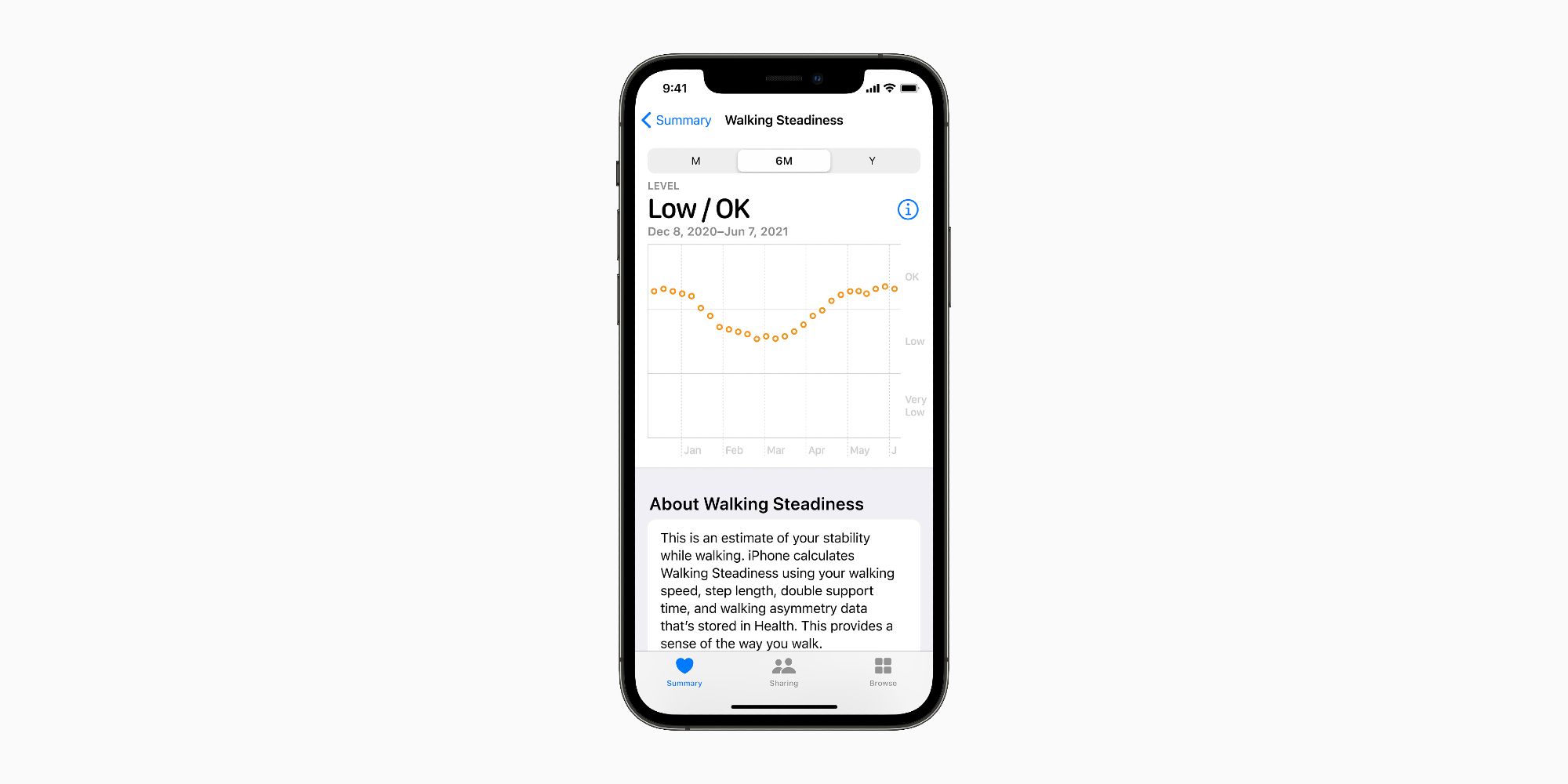Among the new additions that Apple unveiled for iOS 15 at its Worldwide Developer Conference this week was the Walking Steadiness feature. It is aimed at giving iPhone users an insight into their risk of having a fall while walking. Apple calls the feature "an industry first" and it draws on data from sensors in its devices that is already used for other features.
iPhone users have been able to track the number of steps they take each day using the Health app for years now. In addition, Fall Detection was added to the Apple Watch in 2018, using the device's accelerometer and gyroscope to track wrist trajectory and impact acceleration, as well as algorithms to calculate whether a fall has likely been had. Walking Steadiness takes these two features further by tracking data over time to get a profile of how the user walks and to recognize when their walking profile changes.
Like Fall Detection on the Apple Watch, Walking Steadiness uses sensors in the iPhone to track the user's mobility as they walk. Apple explains that "custom algorithms" to calculate walking speed, step length, double support time, and walking asymmetry. This, in turn, is used to assess the user's overall balance, stability, and coordination.
How & Why To Use Walking Steadiness On iPhone
There are two main elements of Walking Steadiness for users to keep in mind. The first is an illustration of their stability over time, which they can view by opening the Health app and navigating to the Walking Steadiness section. Here, they'll see their stability rated on a graph as OK, Low, or Very Low and they can change the timeframe for which the graph reports.
Users can also receive notifications to alert them if their steadiness becomes Low or Very Low. The purpose of this is so that they can be proactive in trying to address the issue and reduce their risk of having a fall in the future. To help with this, Apple provides visual exercises for users in this situation that it says are "based on clinically validated methods to increase strength and balance."
Apple makes the point that more than 37 million people worldwide every year need medical attention due to falls and that, typically, fall risk is assessed using a questionnaire. By introducing Walking Steadiness as another health feature on the iPhone, it hopes to help reduce that number by offering users more sophisticated risk fall assessment.
Source: Apple


